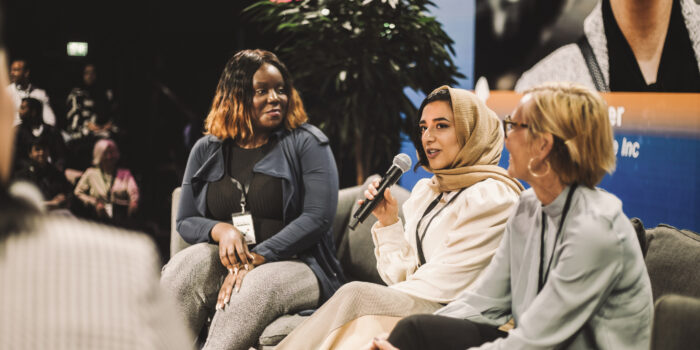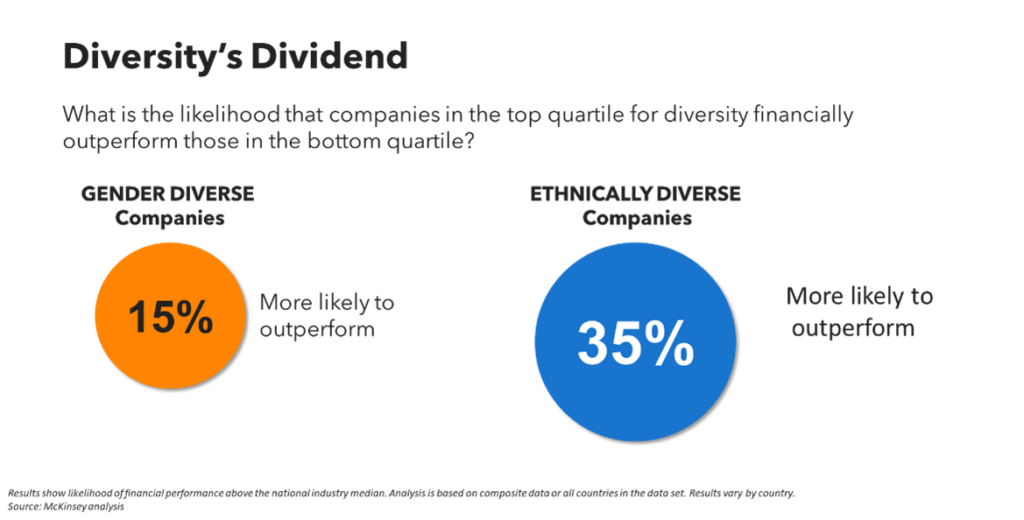
March plays host to two important observances: Ethnic Equality Month and Gender Equality Month. At the heart of both is the call to recognize our similarities while acknowledging, appreciating and respecting our differences.
Racial and ethnic equality, gender equity and social inclusion are critical to safe, productive, resilient workplaces, but it requires participation from all stakeholders across the organization. And we believe this starts with education. Equality, equity, and inclusion are much more than just trendy buzzwords, and to make real change happen, we need to understand the objectives behind each term, and how they work together. Consider this your Diversity, Equity & Inclusion primer– the essentials you need to analyze your own internal processes, polices and culture through a new lens.
Diversity
Diversity is the quantitative representation of specific – typically marginalized — communities. Diversity is not limited to race or ethnicity, it also incorporates life experiences, religious views, (dis)abilities, and gender. Diversity welcomes voices of different backgrounds (i.e. the disabled community, LGBTQ+ community, and communities of color) into the organization, but diversity alone is not enough. Sometimes, the culture of the business will minimize the differences that each of these diverse groups or individuals bring to make them fit with the status quo. The result is that those with diverse backgrounds feel like statistics. For example: “We have X amount of [this specific group type] working within our management team.”
Equity
Equity considers historical legacies along with current realities of discrimination and oppression that marginalized communities experience, and the understanding that everyone does not have the same start in life. Therefore, an equitable workplace unlocks opportunities for every employee, limiting any biases so they can participate fully and reach their highest potential.
Take for example, an employee who is new to the US and for whom English is not their first language. They find themselves part of a team that engages in several verbal conversations. The team leader demonstrates equity by realizing their team member – while fluent – has not been speaking English for the same amount of time as others on the team. To ensure their full engagement, they send out the discussion topic a week prior and allow for multiple avenues for thoughts to be shared (verbally as part of the meeting, or in a shared online brainstorming portal). This allows the international team member to choose how they would like to participate while contributing to the common goal.
Inclusion
Inclusion welcomes people to exist as their authentic selves within their workplace and work culture. It means people will not be excluded from work promotions or opportunities because they are living as their authentic selves.
For example, an employee with autism who needs specific breaks to meet their sensory needs and to stay regulated, is not going to be passed up for a promotion because of this. The culture of the workplace does not equate their coping mechanisms as an autistic person to the ability of how well they perform.
Hollywood Does Gender Equity
If you’re a visual learner – or heck, just a die-hard Diane Keaton fan – it’s worth checking out the 1987 classic, “Baby Boom”. While a few decades old, the film hits home the fact that unless businesses prioritize equity, inclusion, and equality within their culture and processes, success is out of grasp for many. Including women. Or people of color. Or those who are differently abled.
Here’s the breakdown: New York City businesswoman J.C. Wyatt (Keaton) is married to her high-powered executive job and on track for a promotion as partner. Her life takes an unexpected turn when she inherits a baby after the death of a distant relative. Not only is she competing with others in her office for the chance at partner in the firm (specifically a young, unmarried male) but she’s now spending her free time looking for nannies, learning how to change a diaper and juggling meetings and bottles. Eventually, her senior managers find out about her life change and make the decision to let her go because “she’s no longer at the top of her game”.
Thirty-six years since “Baby Boom’s” debut, are we closer to cultivating workplaces where women are supported and given the same access to opportunities? Not quite, according to the Global Gender Gap Report 2022, a comprehensive study conducted by the World Economic Forum which assesses progress made by countries in achieving gender parity.
In the United States, the gender pay gap remains significant, with women earning 82 cents for every dollar earned by men. Women are also underrepresented in leadership positions, with only 29% of senior management roles held by women.
Closer to home in the world of workforce mobility, in a global workforce that is roughly 40% female, only 1 in 5 international assignees are female. To address this, we need to be asking why.
- Are mobility opportunities flexible and supportive enough to meet the needs of different demographics?
- Are minorities, like women, being overlooked for assignments due to assumptions or biases (i.e. Sandy won’t want to take that assignment because she won’t want to be away from her children for two months).
How can we encourage more women and minorities to seek opportunities to advance through relocation?
Break the Bias: The fact remains that company cultures have supported the long-held assumption that women are less likely to want to move because they prioritize family needs before career, and for minority groups, concerns about the inability to fit into a new environment or “foreign” culture would be an insurmountable obstacle. Breaking these assumptions is a first – very necessary – step. Women and minority groups want to progress in their careers and hold decision-making roles, so naturally, they are open to mobility opportunities that will bring them closer to these goals.
Support your Talent: Whether they are just entering the workforce or are seasoned experts, employees are looking for and expecting support. So progressive companies are supporting the recruitment of a broader demographic by offering opportunities and incentives that are in tune with what would motivate people to take on either a domestic relocation or an international assignment.
Mobility is a launchpad for your leadership pipeline, and ensuring that your program is inclusive and accessible to a broader talent pool will also deliver a strong ROI, according to a 2022 report by McKinsey. Because in today’s global marketplace, diverse organizations have the upper hand:

In Conclusion…
The primary focus of DEI is to work towards changing workplace cultures that hold damaging beliefs towards marginalized groups. A blend of knowledge and representation from a wide range of communities can encourage participation from marginalized communities and foster a workplace culture where everyone feels valued, psychologically safe, and free to be their authentic selves.
Contributing Authors:
 Melissa Gunshon
Melissa Gunshon
Joining Weichert in 2022, Mel is a Business Travel Coordinator. She lives in Texas with her partner, their son, a cat, and a few cows.
 Christina Kasiraja-Lebrun
Christina Kasiraja-Lebrun
As VP of Business Development, Christina nurtures opportunities with clients in our Growth Markets (Navigator TM) sector. Originally from Singapore, Christina has lived and worked in various parts of the globe before settling in the US. She is a committed physical and mental well-being advocate and currently resides in Miami with her husband and two fur babies.